Diphylleia Grayi (Skeleton Flower): Grow & Care for the Magical White to Transparent Flower
Written by Iris
Nov 13 2021

The Diphylleia Grayi alos called Skeleton Flower, is usually just a small white flower, and there is no place worthy of attention, but the "water" is the magic tool for its transformation. Diphylleia Grayi is a magical flower that will be "invisible" when it meets water! Diphylleia Grayi is mostly distributed in colder areas in the north of Japan. The flowers bloom mainly in late spring and early summer. The petals will become transparent due to the rain, and they have the reputation of "skeleton flower" and "crystal flower".
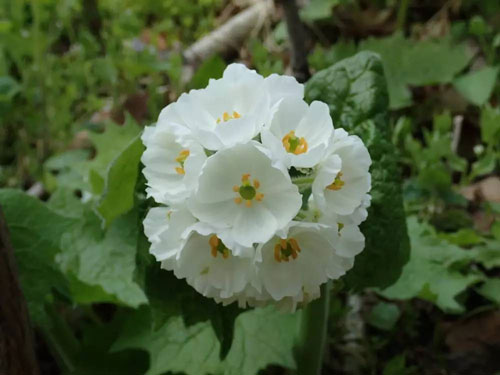
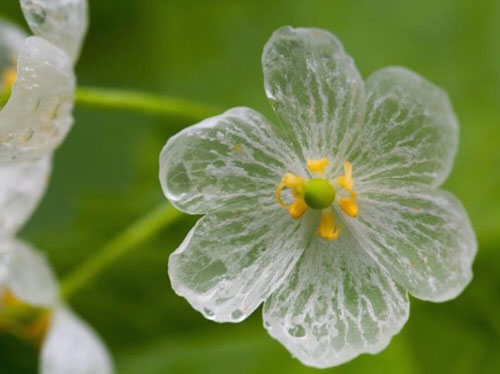
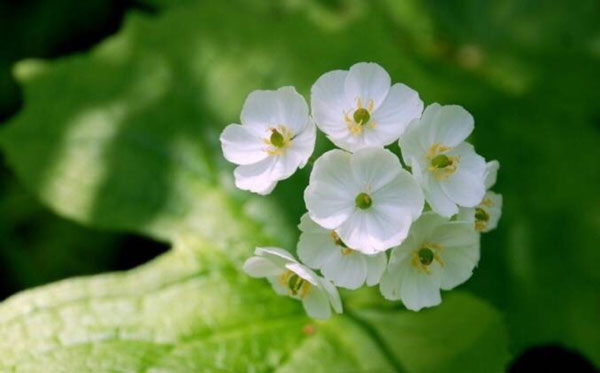
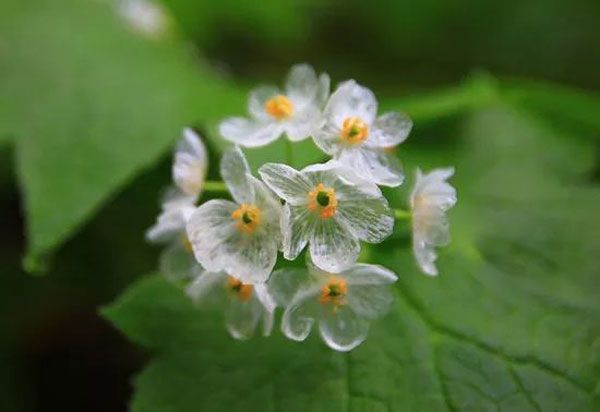
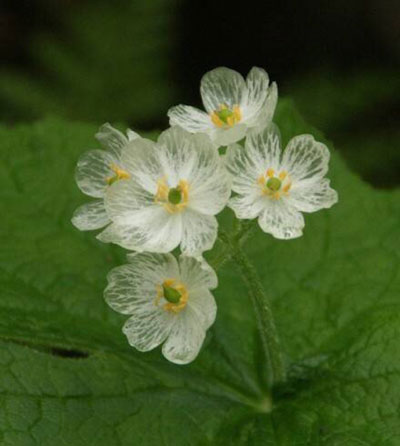
2. After the rain impacts the white petals, the internal structure (such as vacuoles) is damaged and can no longer support the cells and produce the effect of reflecting light. The light directly penetrates the non-pigmented cells, and they look transparent. This is just a physical phenomenon, not a chemical reaction.
Therefore, this kind of flower is also called "skeleton flower" or "crystal flower". The "skeleton flower" is because the entire pattern of the petals becomes clear after it becomes transparent.
| Botanical/Scientific Name | Diphylleia Grayi |
| Common Names | skeleton flower, crystal flower |
| Plant Type | Perennial |
| Bloom Time | In late spring and early summer. |
| Flower Color | Small white flower; Become transparent flower when meeting water |
| Plant Time | Plant it in late-winter or late-summer |
| Light Requirements | Part shade to full shade |
| Soil Requirements | Sandy and loamy soils |
| Watering | Water it gradually and deeply by drip watering to keep constant moisture |
Where to Grow Diphylleia GrayiWhen to Grow Diphylleia GrayiHow to Grow Diphylleia GrayiDiphylleia Grayi Propagation from DivisionGrow Skeleton Flower in ContainersHow to Care for Diphylleia GrayiSkeleton Flower Light RequirementsSkeleton Flower Soil CareSkeleton Flower WateringSkeleton Flower Temperature & Humidity CareSkeleton Flower Fertilizer CareSkeleton Flower Pests & Diseases CareSkeleton Flower Similar SpeciesWhy the Diphylleia Grayi Flower Becomes Transparent?
Where to Grow Diphylleia Grayi
Diphylleia Grayi is a forest local to the colder uneven areas of China and Japan. To decide if skeleton flower is reasonable for your yard, envision a timberland setting in a cool zone where the skeleton bloom develops as an understory plant in an obscure area, under the shelter of deciduous trees, shielded from solid breezes and filling in reliably wet, undisturbed soil that is wealthy in natural material from fallen tree leaves.
When to Grow Diphylleia Grayi
Plant it in late-winter or late-summer. Diphylleia Grayi (Skeleton Flower) has both male and female blossoms so you needn’t bother with two plants for fertilization. Be that as it may, skeleton bloom is best planted in groupings and not as an individual example. The clusters of huge, green foliage are an alluring groundcover.
How to Grow Diphylleia Grayi
Skeleton Flower grows stems from its thick underground rhizomes. To propagate Skeleton Flower, divide the rhizomes, or take cuttings and replant them. While you might find skeleton flower seeds for sale, growing it from seed is tricky. Germination is very slow, requires a special cool weather cycle, and can take up to a year or longer.Diphylleia Grayi Propagation from Division
In February and March, the old roots of the mountain lotus leaf were dug out from the soil, and then divided into small pieces of about 13cm, and then the divided pieces of rhizomes were planted into the soil. Pay attention to leave enough space between the Diphylleia Grayi plants, and the row spacing The interval must be at least 30cm or more. Mountain lotus leaf is a kind of plant that is more afraid of drought. After planting diphylleia Grayi, water should be adequately watered. The transplant can be carried out from April to November.Grow Skeleton Flower in Containers
If your local climate is below zone 4, you can still grow Diphylleia Grayi in containers. Bring the containers indoors for the winter. During its dormant period, the plant needs less water. With spring arriving, slowly increase the watering and acclimate the plants over several days, similar to hardening off seedlings, before leaving the containers outside permanently for the summer.
How to Care for Diphylleia Grayi
Skeleton Flower Light Requirements
Diphylleia Grayi is sensitive to sunlight. It requires a shady location, preferably woodland, where it is fully protected from the hot midday and afternoon sun.Skeleton Flower Soil Care
The soil should be profound, wealthy in humus and reliably soggy yet very much depleted. To copy the plant’s local environment, where Diphylleia Grayi gets a consistent gracefully of rotting natural issue, mulch the plant with an adequate measure of fertilizer or leaf shape each year.Skeleton Flower Watering
Diphylleia Grayi requires constant moisture so choose a location with naturally damp soil. Throughout a dry spell, water it gradually and deeply by drip watering.Skeleton Flower Temperature & Humidity Care
The plant needs a cool, temperate climate, and it also likes humid air. The Diphylleia Grayi plant will not do well in hot, dry summer weather. The Diphylleia Grayi (Skeleton flower) plant dies back during the winter. You can cover the plants with a layer of organic mulch, this will help to protect the plant from subzero winter temperatures.Skeleton Flower Fertilizer Care
If there is not enough natural organic matter from fallen leaves, you can add a complete fertilizer in the early spring.Skeleton Flower Pests & Diseases Care
Diphylleia Grayi (Skeleton Flower) is not commonly affected by any pests or diseases.
Skeleton Flower Similar Species
There are two other Diphylleia species but only Diphylleia Grayi has the stunning skeleton effect. This does not mean that the two other Diphylleia species don’t make attractive groundcovers in shady woodland locations. American umbrella leaf (Diphylleia cymosa) is a plant native to the southeastern United States and the southern Appalachian mountains. The outstanding feature of the umbrella leaf native to China and Japan (Diphylleia sinensis) is the shiny bronze color of the emerging foliage in the spring.
Why the Diphylleia Grayi Flower Becomes Transparent?
1. After the white petals meet and absorb water, the cell gap is filled, and the light changes from reflection to refraction, resulting in a transparent effect;2. After the rain impacts the white petals, the internal structure (such as vacuoles) is damaged and can no longer support the cells and produce the effect of reflecting light. The light directly penetrates the non-pigmented cells, and they look transparent. This is just a physical phenomenon, not a chemical reaction.
Therefore, this kind of flower is also called "skeleton flower" or "crystal flower". The "skeleton flower" is because the entire pattern of the petals becomes clear after it becomes transparent.
Latest Updated
- Benefits of Bugleweed - 7 Science-backed Health Benefits
- Bugleweed Dangers & Side Effects - Is It Poisonous?
- How to Plant Evergreen Trees - What You Should Know
- When to Plant Evergreens - Grow Guide for Evergreen Trees
- 12 Wonderful Evergreen Shrubs for Your Garden
- 12 Popular Evergreen Plants with Pictures for Beginners
- When And How To Prune A Lilac Bush Like a Pro
- How to Grow & Care for Lilac Vine (Hardenbergia Violacea)
- Japanese Lilac Tree (Syringa Reticulata) Care & Propagation Guide
- Shumard Oak Pros and Cons - What to Know
Popular Articles
- Winter maintenance of Antirrhinum Majus
- How to Grow Terminalia Mantaly Tree
- How to Grow and Care for Crossostephium Chinense
- How to grow Antirrhinum Majus in spring
- Peristeria Elata (Dove Orchid) Profile: Info & Care Guide
- Underwatered Snake Plant (Sansevieria Trifasciata) - Signs And How To Fix
- How to Care for Brazilian Jasmine Plant (Mandevilla Sanderi)
- How to Grow & Care for Graptopetalum Purple Delight in Summer
- Rosa Chinensis (China Rose): Plant Growing & Care Tips
- How to Care for Baby Sun Rose (Aptenia Cordifolia)